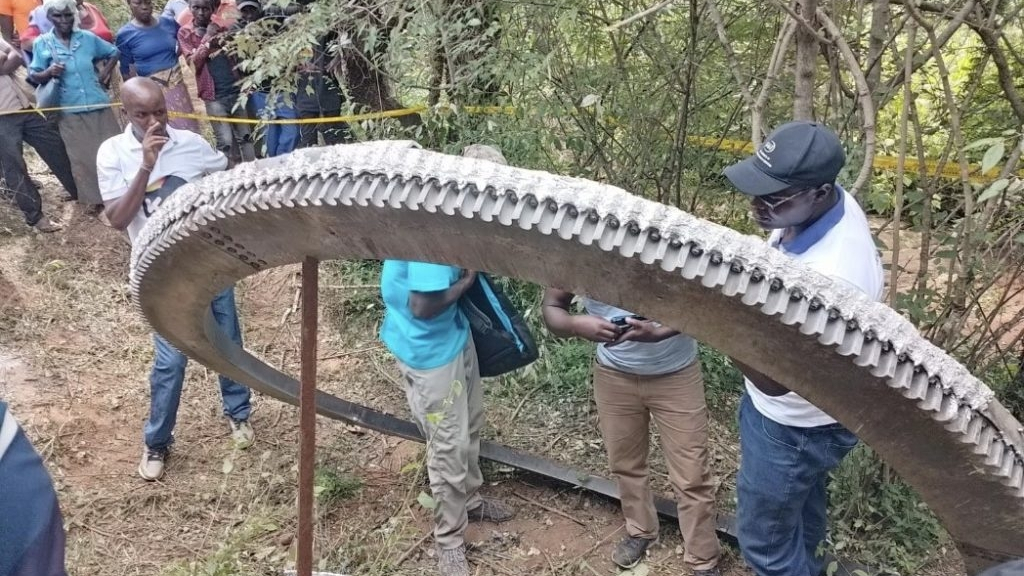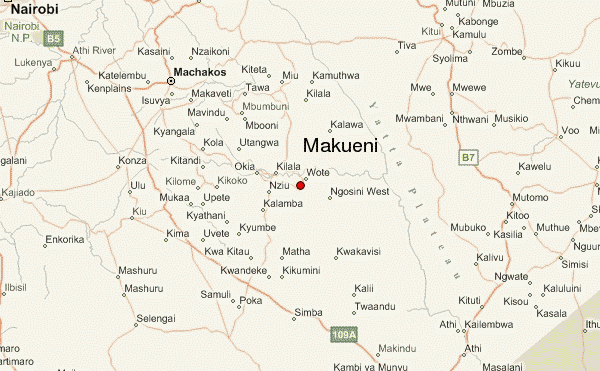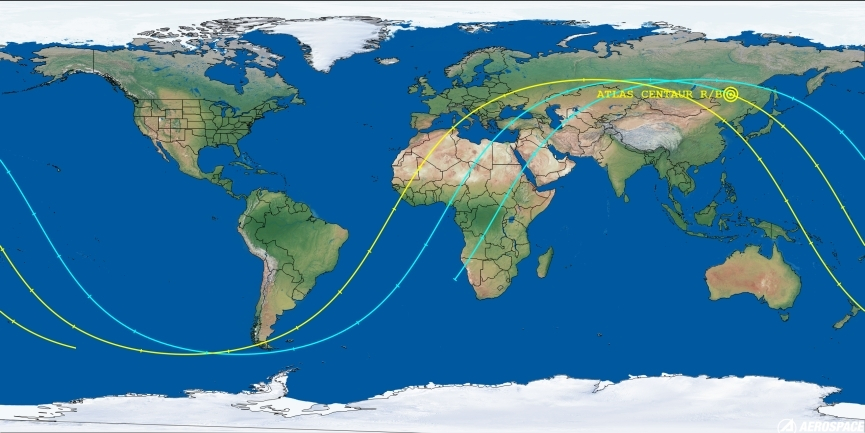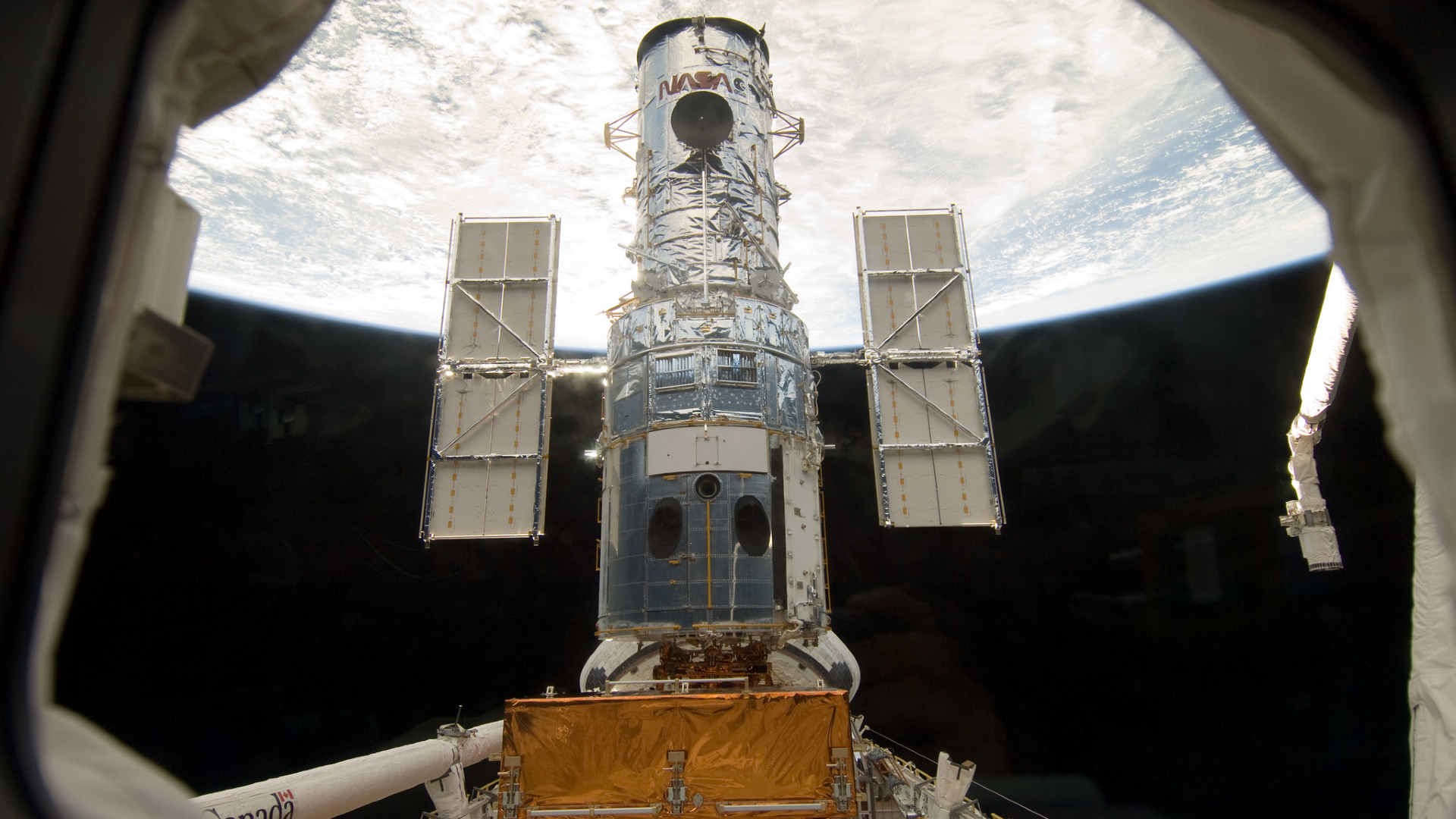
Space debris crash in Kenya village believed to be from leftover rocket hardware
Talk about ringing in the New Year!

Officials with the Kenya Space Agency (KSA) officials in Nairobia have reported that a large metallic ring fell from the sky on Dec. 30 , crashing "red-hot" into Mukuku village, in Makueni county – in the country's south.
Investigators think the object, which is roughly 8 feet (2.5 meters) in diameter and weighing some 1,100 pounds (500 kilograms), is actually a piece of space debris, rocket leftovers that came crashing down, reportedly within the village at roughly 3 p.m. local time.
The KSA "secured the area and retrieved the debris, which is now under the Agency's custody for further investigation."
However, sky watching veteran and reentry tracker, Jonathan McDowell who works at the Harvard–Smithsonian Center for Astrophysics, told Inside Outer Space that there is "no obvious space candidate. I am not convinced it's not from an airplane. Don’t see obvious evidence of reentry heating."

On the other hand, Darren McKnight, a space debris expert at LeoLabs, points out that sometimes incoming space debris stays covered by some "sacrificial mass" that burns up and leaves the raw hardware to reenter.
So what is the object?
Official statement
Following the discovery of a metallic fragment of a space object in Mukuku Village, Makueni County, the Kenya Space Agency has issued the following statement, as posted on X (formerly Twitter):
Get the Space.com Newsletter
Breaking space news, the latest updates on rocket launches, skywatching events and more!
Following the discovery of a metallic fragment of a space object in Mukuku Village, Makueni County, the Kenya Space Agency has issued the following statement. Read more for details on the incident, preliminary findings, and next steps. pic.twitter.com/n8gsvoKku4January 1, 2025
The agency thanked the residents of Mukuku Village, local leadership, and media outlets for their swift actions in reporting and disseminating the incident.
Possible link?
An early review by Inside Outer Space of the Aerospace Corporation’s Center for Orbital and Reentry Debris Studies (CORDS) Reentry Database suggested a possible link to an incoming rocket body associated with an Atlas Centaur launch back in 2004.
That rocket body leftover, tagged as object 28385, was predicted to reenter on Dec. 30 at 21:33 UTC ± 2 hours, with a flight path taking it over Africa.
The Atlas Centaur rocketed out of Cape Canaveral Space Force Station on Aug. 31, 2004 carrying a classified USA-179 satellite.
According to the NASA Space Science Data Coordination Archive, USA-179 is an American military satellite for the National Reconnaissance Office (NRO), launched by an Atlas 2AS rocket from Cape Canaveral. It was the last flight of the Atlas 2 models.
However, reentry tracker McDowell said U.S. Space Force data showed the 28385 rocket stage reentered over Lake Baikal in Russia.
So yes, further official, KSA assessment of this speculative space debris prospect is likely forthcoming.

In an independent review by Inside Outer Space to better identify the nature of the skyfall, there’s an interesting, but still speculative photo comparison – that could point to some design features of manufactured booster-related hardware and techniques used.

As example, Roscosmos enterprise images of upgraded Angara-A5M rocket hardware seem telling, perhaps, or suggest a type of fabrication process commonly used in the booster-making business by various firms.
Specialists from the Khrunichev Center manufacture parts and components for the first two Angara-A5M launch vehicles, as well as test benches for testing and fine-tuning modern rocket manufacturing technologies.
Use of new technologies in the manufacture of key structural elements with improved weight characteristics relative to the standard Angara-A5 design.
Any follow-up suggestions are welcomed.
Join our Space Forums to keep talking space on the latest missions, night sky and more! And if you have a news tip, correction or comment, let us know at: community@space.com.

Leonard David is an award-winning space journalist who has been reporting on space activities for more than 50 years. Currently writing as Space.com's Space Insider Columnist among his other projects, Leonard has authored numerous books on space exploration, Mars missions and more, with his latest being "Moon Rush: The New Space Race" published in 2019 by National Geographic. He also wrote "Mars: Our Future on the Red Planet" released in 2016 by National Geographic. Leonard has served as a correspondent for SpaceNews, Scientific American and Aerospace America for the AIAA. He has received many awards, including the first Ordway Award for Sustained Excellence in Spaceflight History in 2015 at the AAS Wernher von Braun Memorial Symposium. You can find out Leonard's latest project at his website and on Twitter.
-
eqnx97 Just look at the skinny wooden stick holding up a 1,100 pounds metal ring!! This is a cover story!Reply -
Unclear Engineer Looks like it might be a staging joint.Reply
If it is a rocket component, I would expect somebody to recognize it as their own pretty soon from that photo. But, I guess that doesn't mean they will admit it right away.
I am wondering if it really weighs1,100 pounds. Maybe that "stick" supporting one side is actually an angle iron? -
ultimatewizz Reply
Well at least they did not start off with it is from SpaceX and Elon Musk.. Actually blames another company from 2004. But I am sure they will exaggerate and say it could have killed thousands.Admin said:Kenya Space Agency officials report a large, “red-hot” metallic ring roughly 8 feet (2.5 meters) in diameter fell from the sky, crashing into Mukuku village.
Space debris crashes into Kenyan village, believed to be leftover rocket hardware : Read more -
Musant Reply
The Russian Angara-A5M is 3.6 meters in diameter. However the Russian Rokot second stage is 2.5 meters in diameter, as is their UR-100N ICBM.Admin said:Kenya Space Agency officials report a large, “red-hot” metallic ring roughly 8 feet (2.5 meters) in diameter fell from the sky, crashing into Mukuku village.
Space debris crashes into Kenyan village, believed to be leftover rocket hardware : Read more -
Unclear Engineer https://www.msn.com/en-us/news/world/massive-mysterious-metal-ring-crashes-into-kenyan-village/vi-AA1wQVJlReply
This video shows a lot more detail of the object. It does not appear to be very thick, and I doubt it is made of heavy alloy, so the estimate of 1,100 pounds looks suspect. -
Jim Franklin There is a lot of misreporting about this. Clearly this hot staging ring came from a launch vehicle that was a recent launch, claims in the media it came from a US launch in Aug 2024 are simply laughable, this object would have had to have been in orbit for all that time and thus undergone a full re-entry - it is a titanium-aluminium alloy apparently, it would not have survived the dive through the atmosphere in the condition it is is, it would have hit the ground at around 11km/s - that would not be survivable in that condition.Reply
The ring clearly came from a lauinch where this ring was sub-orbital, thus it severally limits who suplied it to Kenya. Russia had no launches that had this type of assembly in the previous 9 days, so they are out, the US launches that occurred in the days leading up to this incident 1) do not use HS Rings and 2) the ring could not have, aerodynamically, made it that far around the globe, all such rings from US launches end up in the Atlantic or Pacific.
The Chinese had launches, but they do not use HSRs on those launch vehicles, the only other confirmed launches that are in the right region, aerodynamically are likely to end up in Africa and were launched only 2.5 hours prior to the record of the fall was India, which launched a pair of rockets for polar orbits that are 2.8m in diameter and use hot staging rings.
Further, the design of the ring photographed does not match any design used by American, Russian or Chinese launch vehicles, but is reminiscent of the PSLV launch vehicle they use.
However, this does not mean it is ISIRO in origin, there could be others who had undeclared launches.









